Samsung 840 EVO 500GB SSD Review
A Look Inside The 840 EVO
Opening the drive required the removal of three pentalobe security screws, two of which are hidden underneath the rear sticker making it impossible to remove without Samsung knowing about it.
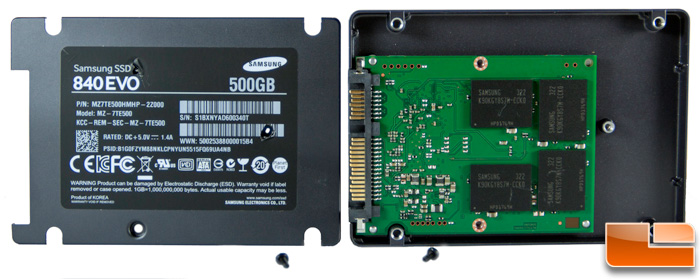
Of course it didn’t stop us from breaking it open but obviously we highly recommend that our readers not follow our example lest they see their warranty go bye-bye.
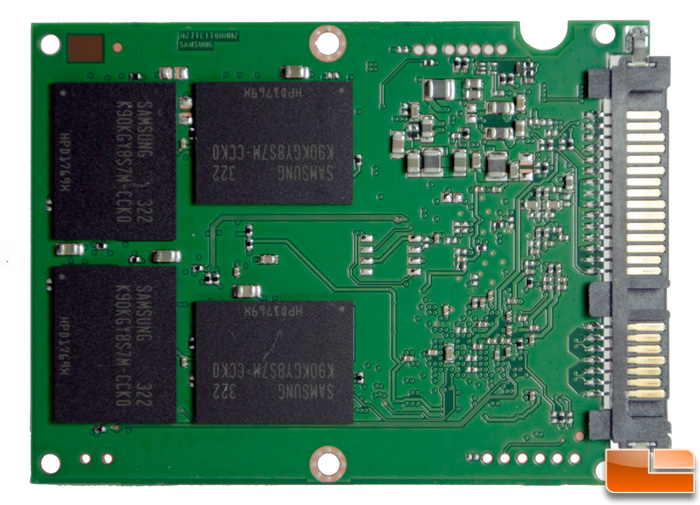
Once open, we see that the PCB is not full size which isn’t unusual, especially with NAND density creeping up allowing for fewer modules and less board real estate needed. Four modules in total in this 500GB drive and all are on this side of the board.
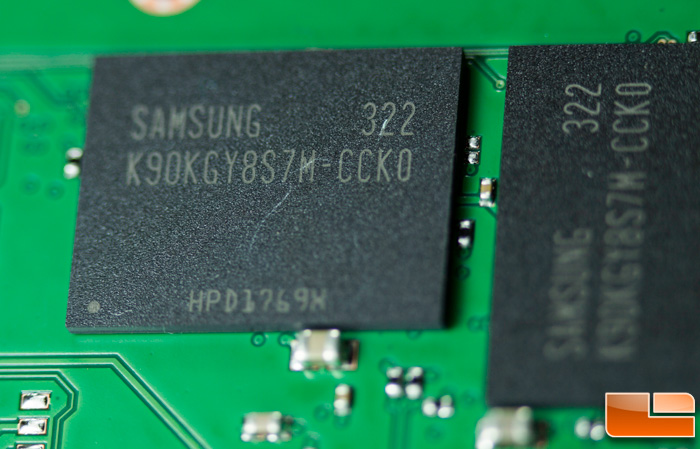
The NAND on board is of course Samsung in manufacture, as are all parts of the drive. The K90KGY8S7M-CCK0 labeled chips are 19nm 128-bit TLC Toggle DDR 2.0, capable of theoretical 400Mbps speeds. TLC NAND is what we saw in the 840 drive (the Pro has MLC) and while it has a shorter rated lifespan, it still should last much longer than what the typical user would need and uses very little power which means longer battery life for mobile users.
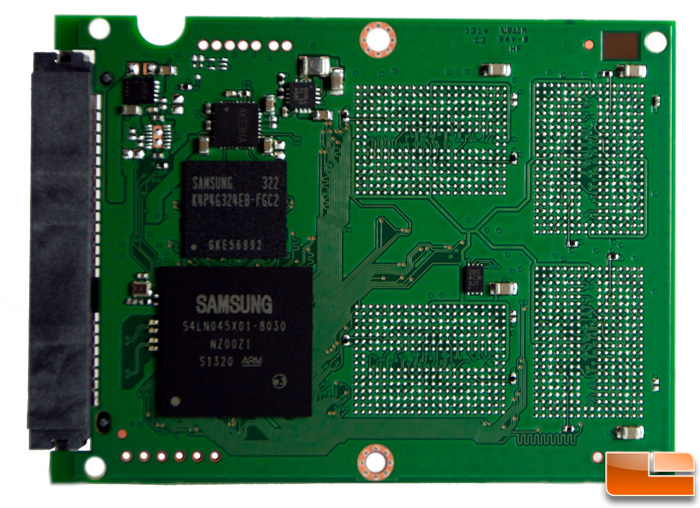
Flipping things over, we are left with just two components of note – the controller and cache.
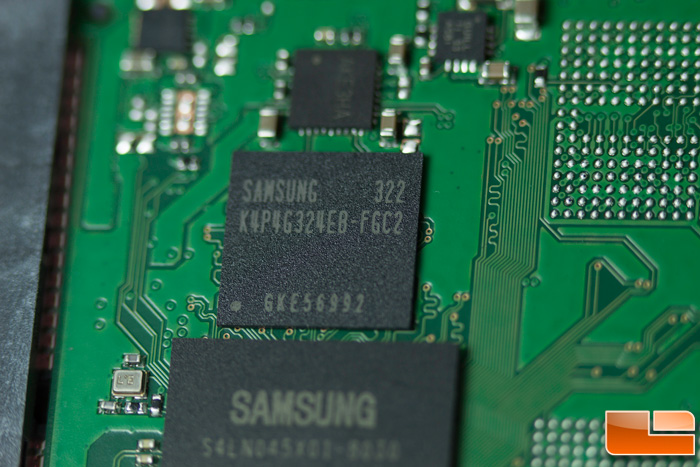
The LPDDR2 cache chip on this 500GB drive is labeled as K4P4G324EB-FGC2 and is 512MB in capacity. The 120GB drives has a 256MB cache and the 750GB and 1TB drives sport 1GB cache. I’m showing my age when I say that I remember when hard drives were a total of 1GB!
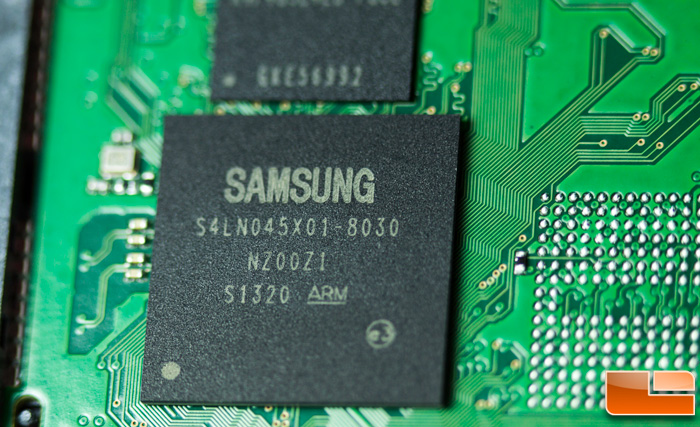
The Samsung MEX S4LN045X01-8030 controller is similar to that of the MDX controller with a triple-core ARM Cortex R4 design with the difference being a 100Mhz bump to 400MHz. With a 32-channel design, the larger capacity drives can really leverage the controller to its fullest. As usual, it supports TRIM and idle garbage collection and also offers an AES 256-bit hardware-based encryption engine which is a feature that’s growing in demand. The PSID (physical security ID) is printed on the drive label in the event the password is forgotten so it can be made useable again albeit wiped clean. Being hardware based, the encryption doesn’t get in the way of performance which is always a plus.
